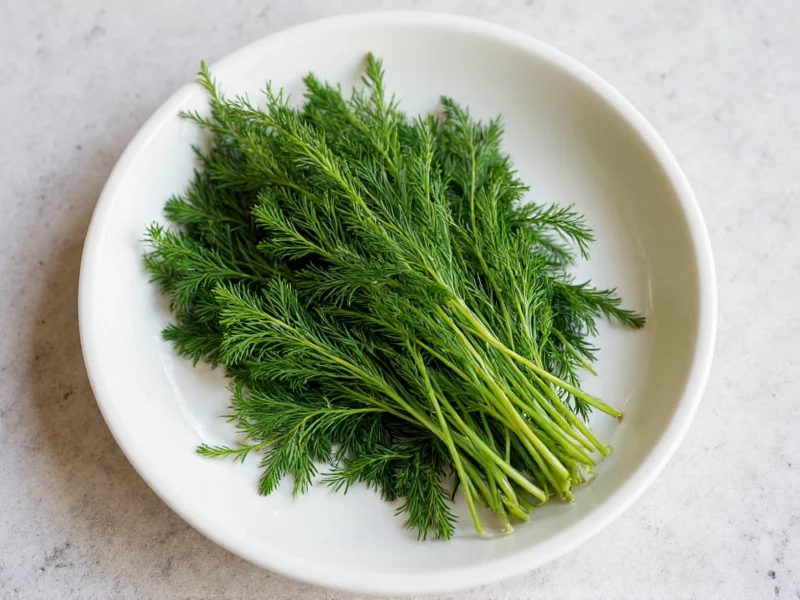Understanding herb substitutions is essential for consistent cooking results, especially when fresh ingredients aren't available. Dried dill offers convenience and longer shelf life, but its intensified flavor profile requires careful measurement to avoid overpowering your dishes.
Why Dried and Fresh Dill Have Different Potencies
When dill is dried, approximately 90% of its water content evaporates, concentrating the essential oils and flavor compounds. This concentration explains why you need significantly less dried dill compared to fresh. The drying process intensifies certain flavor elements while diminishing others, creating a more earthy, less bright profile than fresh dill.
Professional chefs recommend adjusting your dried dill measurements based on these factors:
- Storage duration (older dried herbs lose potency)
- Brand quality and processing methods
- Specific recipe requirements (delicate fish dishes vs. robust potato salads)
- Personal taste preferences
Practical Substitution Guidelines
For most recipes, begin with the standard 3:1 ratio, then adjust to taste. Add dried dill early in the cooking process to allow time for rehydration and flavor distribution. Unlike fresh dill, which is often added at the end of cooking, dried dill benefits from longer exposure to heat and liquids.
When substituting dried dill for fresh in cold dishes like salads or dips, consider these tips:
- Reconstitute dried dill in a small amount of warm water or vinegar for 10 minutes before adding
- Use slightly less than the standard ratio (try 2½:1 instead of 3:1)
- Allow the dish to rest for 30 minutes before serving to let flavors meld
Common Substitution Mistakes to Avoid
Many home cooks make these critical errors when substituting dried dill for fresh:
- Using equal measurements (resulting in overpowering flavor)
- Adding dried dill at the same stage as fresh (missing optimal flavor development)
- Not accounting for the age of dried herbs (older herbs may require slightly more)
- Ignoring recipe context (delicate dishes need more careful adjustment)
Complete Herb Conversion Reference
| Fresh Herb | Dried Herb Equivalent | Special Considerations |
|---|---|---|
| 1 tablespoon fresh dill | 1 teaspoon dried dill | Add early in cooking; reconstitute for cold dishes |
| 1 tablespoon fresh basil | 1 teaspoon dried basil | Fragile flavor; use less in delicate dishes |
| 1 tablespoon fresh parsley | ¾ teaspoon dried parsley | Milder flavor change than other herbs |
| 1 tablespoon fresh cilantro | ½ teaspoon dried coriander | Not a direct substitute; different flavor profile |
| 1 tablespoon fresh thyme | ½ teaspoon dried thyme | Stronger concentration ratio than most herbs |
Adjusting for Recipe Specifics
Not all recipes respond equally to herb substitutions. Consider these adjustments when substituting dried dill for fresh:
Fish and seafood dishes: Use 25% less dried dill than the standard ratio. Delicate seafood flavors can be overwhelmed by concentrated dried herbs.
Pickling and preserving: The standard 3:1 ratio works well, but increase by 10-15% if your dried dill is older than 6 months.
Sauces and dressings: Reconstitute dried dill in a small amount of the recipe's liquid before adding to ensure even distribution and prevent gritty texture.
Bread and baked goods: Use the full 3:1 ratio as baking mutes some herb flavors, and dried dill distributes more evenly in doughs.
Testing and Refining Your Substitutions
The best approach to perfecting dried dill substitutions involves systematic testing:
- Start with the standard 3:1 ratio as your baseline
- Prepare two identical recipe portions—one with fresh, one with dried
- Taste both after appropriate resting time
- Adjust the dried version incrementally until flavor profiles match
- Document your preferred ratio for future reference
Over time, you'll develop intuition for how different brands and storage conditions affect your dried dill's potency, allowing for more precise substitutions without side-by-side testing.
Storing Dried Dill for Optimal Flavor
Proper storage significantly impacts dried dill's potency and your substitution accuracy:
- Keep in airtight container away from light and heat
- Store below 70°F (21°C) for maximum shelf life
- Use within 1 year for best flavor (potency decreases gradually after 6 months)
- Test older dill by rubbing between fingers and smelling—weak aroma indicates reduced potency
When using older dried dill, increase the amount by 10-25% beyond the standard ratio to compensate for flavor loss.











 浙公网安备
33010002000092号
浙公网安备
33010002000092号 浙B2-20120091-4
浙B2-20120091-4